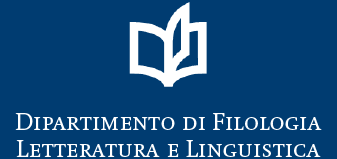The orthographic representation and its effects on the morphonological level:
the case of the Italian article before glide /w/
Italian shows three allomorphs concerning the definite masculine article (il, lo, l), which stand in complementary distribution. Their occurrence is constrained by the syllable structure of the left edge of nouns that follow the article (Marotta, 1993).
The distributional pattern is the following one:
(a) il occurs before tautosyllabic clusters, as in il cane “the dog”, il prato “the meadow”;
(b) lo before sC clusters or the so-called ‘intrinsic geminates’, i.e. /ɲː/, /ʣː/, /ʦː/, as in lo scudo “the shield”, lo gnomo “the gnome”, lo zero “the zero”, lo zio “the uncle”;
(c) l before an onset-free syllable, i.e. in l’albero “the tree”.
In the case of /w/-initial words, the allomorph selected is l; therefore, l’uomo /ˈlwɔmo/ “the man”, l’uovo /ˈlwɔvo/ “the egg”. However, nouns beginning with the glide /w/ are very rare in the native lexicon of Italian, whereas the recent borrowings, mostly from English, are quite numerous. In the latter case, the allomorph selected is il; e.g. il western, il weekend, il workshop.
Such a divergence concerning the treatment of /w/-initial words could remain unexplained if we only focus on the phonological properties of the left edge of nouns (see Marotta (1987) for an analysis of the Italian diphthongs). Our hypothesis is that the orthographic representation of the labiovelar glide /w/, since the grapheme is 〈u〉 in the native lexicon and 〈w〉 in borrowings, may have a role in the selection of the article (but see Bertinetto & Loporcaro (2005:141) for a different view). If /w/ is represented by the grapheme 〈w〉, Italian speakers (and writers) may be induced to analyse words beginning with 〈w-〉 as having an onset (i.e. a consonant) in first position. On the contrary, if /w/ is represented by the grapheme 〈u〉, /w/-initial syllables may be interpreted as being onset-free.
In order to confirm our hypothesis, we presented a test where 40 university students were asked to write the most appropriate article before masculine nouns in a written list including every syllabic configuration showed by Italian lexicon in first position. For what concerns 〈w〉-initial words, the analysis has revealed that il has been opted for 100% for some types, however never lower than 97% in general. This trend is confirmed by an analysis implemented on two corpora: (i) Google Books corpus through Ngram Viewer tool and (ii) itTenTen16 corpus on Sketch Engine. Indeed, the analysis in (i) revealed zero occurrences of 〈l’w-〉 and 〈lo w-〉 (apart some few exceptions), while the one in (ii) showed that il before 〈w〉-initial words is the most frequent allomorph (about 99%).
In order to take the pattern above into account, we propose that Italian speakers operate a different syllabification of glide-vowel strings, at least in word initial position, according to the graphemic representation of the glide. The empirical results confirm that with the grapheme 〈u〉, the glide-vowel string is analysed as a branching nucleus ([N1N2]σ), triggering the pattern in (c); e.g. l’uomo “the man”; whereas the grapheme 〈w〉 leads to interpret the same phonological string as a CV syllable, activating then the pattern (a); e.g. il workshop.
We can conclude that graphemes may interfere with the phonological representation at the syllable level (see Ventura et al. (2001) for similar results). In turn, the interface between phonology and orthography has an impact on the morphonological structure; in particular, on the selection of the allomorph of the masculine definite article.
References
Bertinetto P. M., Loporcaro M., 2005, “The sound patterns of standard Italian as compared with the varieties spoken in Florence, Milan and Rome”, in International Journal of the International Phonetic Association 35(2), pp. 131-151.
Marotta G., 1987, “Dittongo e iato in italiano: una difficile discriminazione”, in Annali della Scuola Normale Superiore di Pisa. Classe di Lettere e Filosofia , 1987, Serie III, Vol. 17, No. 3, pp. 847-887.
Marotta G., 1993, “Selezione dell’articolo e sillaba in italiano: un’interazione totale?”, in Studi di Grammatica Italiana XV, pp. 255-296.
Ventura P., Kolinsky R., Brito-Mendes C., Morais J., 2001, “Mental representations of the syllable internal structure are influenced by orthography”, in Language and cognitive processes 16(4), pp. 393-418.

